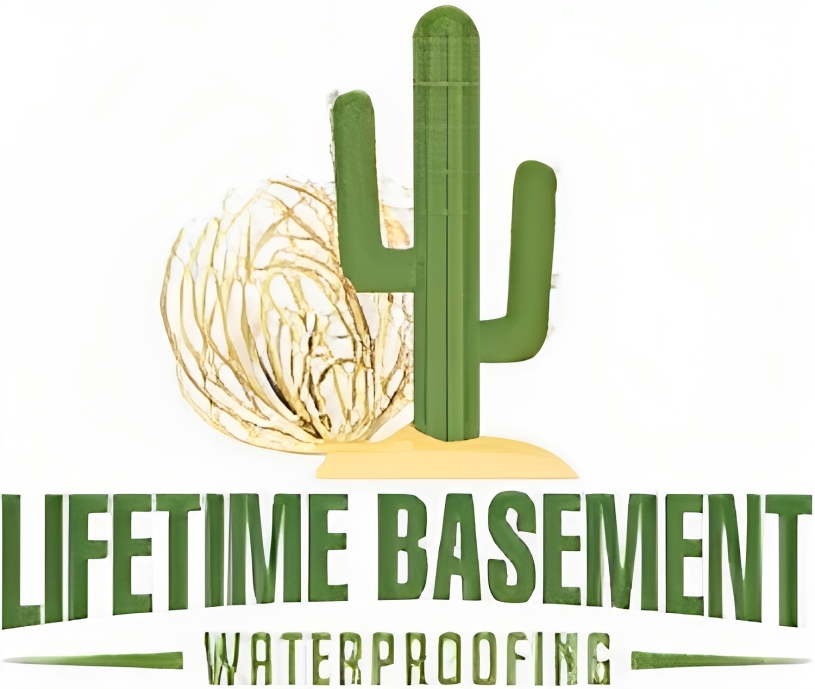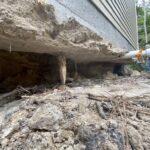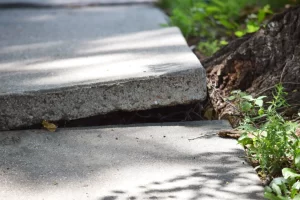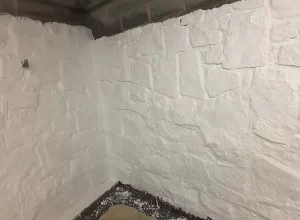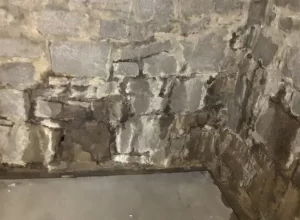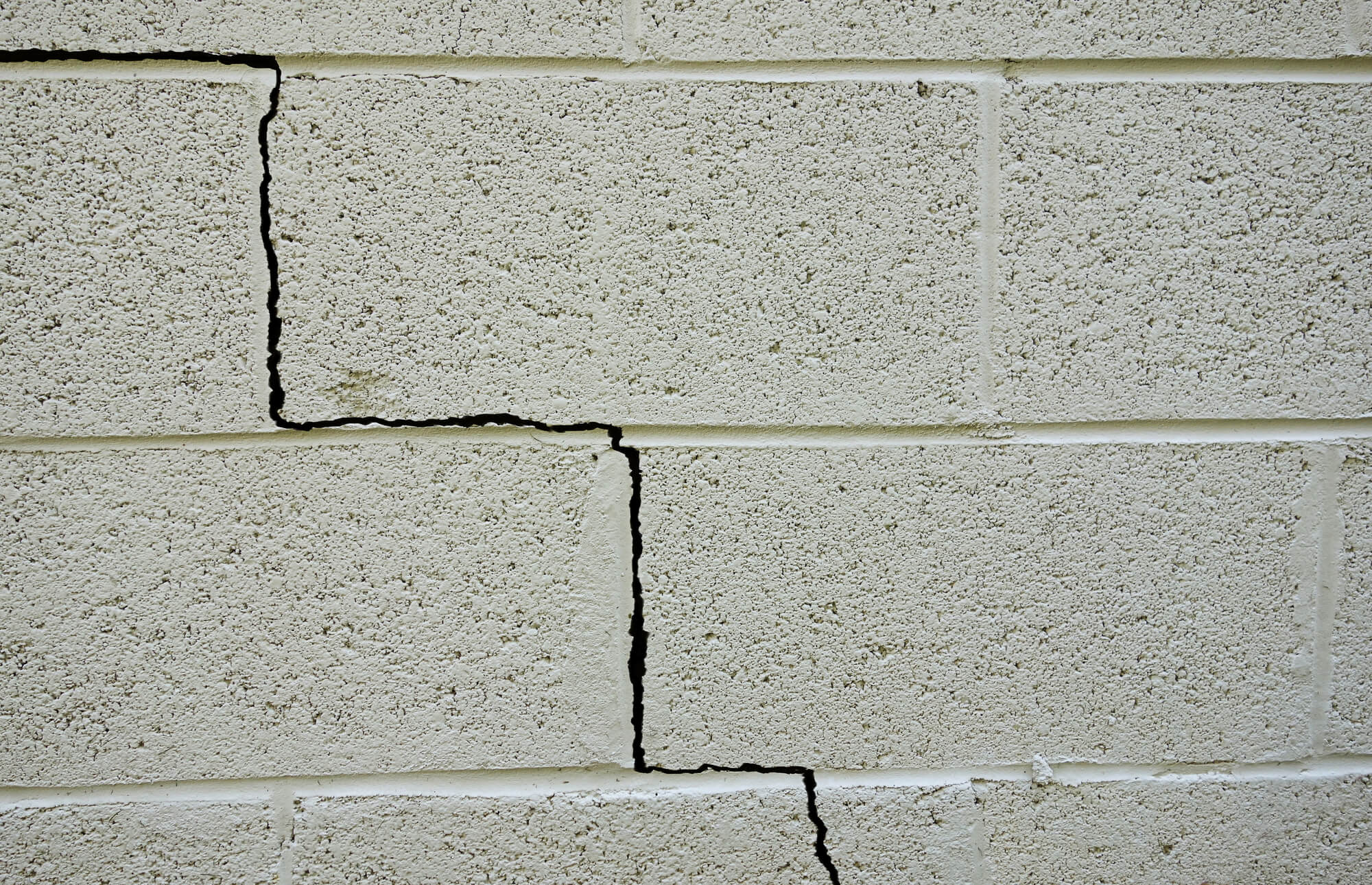
Foundation cracks are common in older homes because materials weaken over time, leading to structural degradation. The house settles unevenly due to natural causes, poor construction, and soil movement caused by factors like clay soil pressure and tree roots. Additionally, water damage, climate changes, lack of maintenance, and even natural disasters contribute to foundation issues. Understanding these factors can help you prevent and address foundation cracks effectively.
Key Takeaways
- Aging materials weaken, leading to cracks.
- Natural settling causes gradual foundation shifts.
- Soil movement from clay and poor drainage impacts foundations.
- Poor construction practices contribute to foundation issues.
- Water damage and tree roots can compromise foundation integrity.
Aging of Materials
As materials age, they may weaken and become more susceptible to developing cracks in the foundation of older homes. Over time, the structural integrity of the materials used in the construction of your home can degrade, making them more prone to cracking. Wood, for example, can deteriorate due to moisture and insect damage, leading to a decrease in its ability to support the weight of the house. This weakening can result in shifts that place stress on the foundation, causing cracks to form.
Similarly, concrete, a common material in foundations, can also deteriorate with age. Concrete is porous, allowing water to seep in and potentially cause erosion or damage to the foundation over time. As the concrete weakens, it becomes more likely to crack under the pressure of the house’s weight or external forces. These cracks can start small but have the potential to grow larger if not addressed promptly.
Brick, another material often used in older home foundations, can also be affected by aging. Mortar joints between bricks can deteriorate over the years, allowing for movement that can lead to cracks in the foundation. It’s essential to monitor these materials for signs of wear and address any issues promptly to prevent further damage to your home’s foundation.
Settling of the House
The aging of materials in your home can contribute to the settling of the house, potentially leading to foundation cracks. As your home ages, various factors come into play that can cause it to settle over time. Here are some reasons why settling of the house occurs:
- Natural Causes: Over the years, the soil beneath your foundation naturally shifts and compacts due to elements like weather changes and erosion, causing your home to settle unevenly.
- Structural Changes: As the materials in your home age, they can weaken or deteriorate, leading to a gradual settling of the entire structure.
- Moisture Absorption: Moisture intrusion into the foundation can weaken the soil underneath, causing it to settle and potentially crack over time.
- Poor Construction: In older homes, inadequate construction practices or the use of subpar materials can contribute to uneven settling, leading to foundation issues.
Understanding the reasons behind the settling of your home can help you take proactive steps to address any potential foundation cracks before they escalate into more significant structural problems. Regular maintenance and inspections can help mitigate the effects of settling and keep your home in good condition for years to come.
Soil Movement
Soil movement around your home can significantly impact its foundation, potentially leading to structural issues. The soil beneath your house is constantly shifting due to various factors such as changes in moisture content, temperature fluctuations, and the type of soil present. This movement can exert pressure on your foundation walls, causing them to crack or bow over time.
One common cause of soil movement is expansive clay soil. When this type of soil absorbs water, it swells and exerts pressure on the foundation. Conversely, during dry periods, the soil shrinks, creating empty spaces beneath the foundation. This cycle of expansion and contraction can weaken the foundation and lead to cracks.
Additionally, poor drainage around your home can contribute to soil movement. If water isn’t properly diverted away from the foundation, it can saturate the soil, making it more prone to shifting. This can create uneven pressure on different parts of the foundation, causing it to settle unevenly and potentially crack.
Trees and large shrubs near your home can also impact soil movement. The roots of these plants can absorb moisture from the soil, causing it to shrink and potentially destabilize the foundation. To mitigate the effects of soil movement, make certain proper drainage around your home, avoid planting large trees too close to the foundation, and consider installing a root barrier if necessary.
Poor Construction Practices
Improper construction practices can greatly compromise the stability of your home’s foundation, potentially leading to structural issues. Here are some common poor construction practices that may contribute to foundation cracks in older homes:
- Inadequate Site Preparation: Failure to properly prepare the construction site can result in uneven surfaces or insufficiently compacted soil, leading to settling and shifting of the foundation over time.
- Poor Drainage Systems: Improper installation or lack of adequate drainage systems can result in water pooling around the foundation, increasing hydrostatic pressure and causing cracks to develop.
- Substandard Materials: The use of low-quality or inappropriate building materials can weaken the foundation’s integrity and make it more susceptible to damage from environmental factors.
- Lack of Reinforcement: Insufficient reinforcement, such as omitting rebar or using improper spacing, can make the foundation more prone to cracking under the weight and stress it bears.
Be mindful of these poor construction practices when evaluating the potential causes of foundation cracks in older homes. Addressing these issues promptly can help prevent further damage and guarantee the long-term stability of your home’s foundation.
Water Damage
Examining for signs of water damage is crucial to identifying potential sources of foundation cracks in older homes. Water damage is a common culprit behind foundation issues in older properties. When water accumulates around the foundation, it exerts pressure on the walls, leading to cracks over time. Look for water stains, mold growth, or musty odors in basements or crawl spaces as these are indicators of water infiltration. Leaking pipes, poor drainage, or improper grading around the house can all contribute to water seepage, which weakens the foundation.
To address water damage concerns, make sure that gutters and downspouts are directing water away from the foundation. Regularly inspect and maintain these systems to prevent clogs or leaks. Additionally, check for any standing water around the foundation after heavy rainfall and address grading issues promptly. Installing a proper drainage system, such as French drains, can also help divert water away from the house.
Ignoring water damage can worsen foundation cracks and lead to more severe structural issues in the long run. It’s essential to address water-related problems promptly to prevent further damage and maintain the integrity of the foundation. By staying vigilant and proactive in identifying and fixing water damage issues, you can help preserve the stability and longevity of your older home’s foundation.
Tree Roots
Inspecting the area around your home for tree roots is essential in preventing foundation damage in older properties. Tree roots, although beneficial for the environment, can wreak havoc on your home’s foundation if not kept in check. Here’s why tree roots can be a threat and what you can do to mitigate the risks:
- Expansion: Tree roots naturally seek water sources, and your home’s foundation can provide the necessary moisture. As roots grow, they expand in search of water, causing them to put pressure on the foundation walls.
- Dehydration: In times of drought, tree roots may deplete moisture from the soil around your foundation, leading to soil shrinkage. This can cause the foundation to settle unevenly, potentially resulting in cracks.
- Infiltration: As roots grow, they can infiltrate small existing cracks in the foundation. Over time, these roots can widen the cracks, compromising the structural integrity of your home.
- Species: Some tree species have more aggressive roots that are more likely to cause damage. Understanding the types of trees near your home can help you assess the potential risk they pose to your foundation.
Regularly inspecting your property for tree roots encroaching on your foundation and taking proactive steps to address any issues can help prevent costly foundation damage in the long run.
Climate Changes
To safeguard your home’s foundation from potential damage, consider how climate changes can impact its stability over time. Climate changes, such as extreme temperature fluctuations and increased precipitation, can put significant stress on your home’s foundation. For instance, in regions where temperatures vary drastically between hot summers and cold winters, the constant expansion and contraction of the soil can lead to foundation movement and ultimately cracks.
Moreover, heavy rainfall or drought conditions can also affect the soil beneath your foundation. Excess water from heavy rains can saturate the soil, causing it to expand and exert pressure on the foundation walls. Similarly, prolonged drought can cause the soil to shrink and pull away from the foundation, leaving it unsupported. These changes in soil moisture levels can compromise the foundation’s integrity and lead to cracks.
In areas prone to hurricanes or flooding, the excessive water and forceful winds associated with these events can erode the soil around the foundation, weakening its support system. This erosion can create voids beneath the foundation, making it susceptible to settling and cracking. It’s essential to be mindful of how climate changes in your region can impact your home’s foundation and take proactive measures to address any potential issues that may arise.
Lack of Maintenance
Neglecting routine upkeep tasks can greatly contribute to the deterioration of your home’s foundation. When maintenance is overlooked, you run the risk of encountering foundation cracks that could lead to costly repairs. Here are four reasons why lack of maintenance can be detrimental to your home’s foundation:
- Water Damage: Failure to clean out gutters and downspouts can result in water pooling around the foundation, causing erosion and cracks over time.
- Vegetation Overgrowth: Allowing plants to grow too close to the foundation can lead to moisture retention against the walls, weakening the structure and creating cracks.
- Foundation Settling: Without proper maintenance, the soil beneath your foundation may shift unevenly, leading to settlement issues and ultimately cracks in the foundation.
- Structural Integrity: Routine inspections and maintenance help identify early signs of foundation problems, allowing for timely repairs to prevent further damage.
Natural Disasters
Failure to address natural disasters can pose serious threats to the stability and integrity of your home’s foundation. Your foundation is constantly under the threat of various natural disasters, such as earthquakes, floods, hurricanes, and tornadoes. Each of these events can exert immense pressure on your home, leading to foundation cracks and structural damage if not properly prepared for.
Earthquakes, for instance, can cause the ground beneath your home to shift and settle unevenly, resulting in foundation movement and cracks. Floodwaters can saturate the soil around your foundation, increasing pressure on the walls and potentially causing them to crack or bow. Hurricanes and tornadoes bring strong winds that can impact the structural integrity of your foundation, especially if it has already been weakened by age or lack of maintenance.
To safeguard your foundation against these natural disasters, it’s vital to take preventive measures. Installing proper drainage systems can help mitigate the risk of flooding, while reinforcing your foundation with materials like steel can enhance its resistance to earthquakes and high winds. Regular inspections and maintenance can also help identify and address any vulnerabilities before they escalate into serious issues. By being proactive and prepared, you can minimize the impact of natural disasters on your home’s foundation and guarantee its long-term stability.
Frequently Asked Questions
How Can I Prevent Foundation Cracks in My Older Home?
To prevent foundation cracks in your older home, start by inspecting for signs of damage regularly. Keep the soil around your foundation well-maintained, manage water drainage effectively, and address any issues promptly to maintain structural integrity.
Are Foundation Cracks in Older Homes Always a Sign of Serious Structural Issues?
Foundation cracks in older homes are not always a sign of serious structural issues. However, it is crucial to monitor and address them promptly to prevent potential problems. Regular inspections and repairs can help maintain your home’s integrity.
Can Foundation Cracks in Older Homes Be Repaired Without Major Renovations?
You can repair foundation cracks in older homes without major renovations. By addressing the cracks early and using appropriate materials, you can prevent further damage and maintain the structural integrity of your home effectively.
Are Foundation Cracks in Older Homes Covered by Insurance?
Yes, foundation cracks in older homes are typically not covered by insurance. It’s important to inspect your policy and consider preventative maintenance. Regular checks and timely repairs can help avoid costly issues.
How Do I Know if Foundation Cracks in My Older Home Are Causing Damage to the Rest of the Structure?
To know if foundation cracks in your older home are causing damage, monitor for changes in crack size, doors/windows sticking, and sloping floors. Seek professional inspection if concerned about structural integrity.
Conclusion
Lifetime Basement Waterproofing has been Atlanta’s premier basement waterproofing company for over 30 years.
As a family-owned and operated business, we specialize in basement waterproofing services.
In addition to our expertise in basement waterproofing, we also offer top-notch services such as crawlspace encapsulation, exterior foundation waterproofing, foundation crack repair, and drainage solutions including French drains.
When you choose Lifetime Basement Waterproofing, you can trust us for all your wet basement repair requirements.
